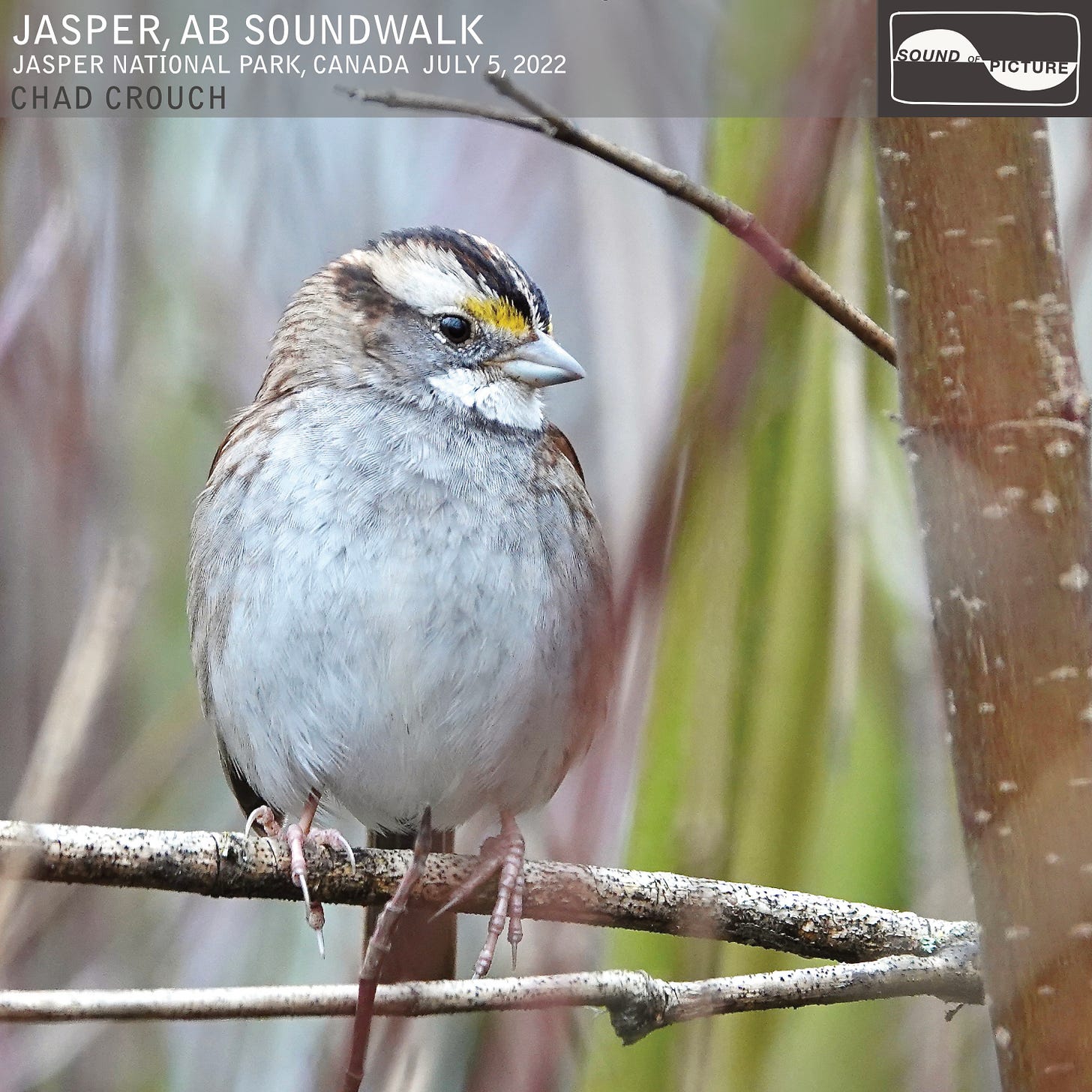I’m revisiting this soundwalk in the wake of the news out of Canada that up to half of the homes and buildings in Jasper have been damaged by wildfire. The precise extent is still unreported. I didn’t quite know how to absorb this, upon reading the news yesterday. I wish I could say I was shocked, but I wasn’t. I’ve felt this before. I’ve recorded in a place—Lahaina, Hawaii—shortly before it was gutted by fire. This compounds the grief, in a way, because the conditioning is to expect catastrophe. I reflexively think what town is next? What places are safe to plan a summer vacation? Could it happen here, in my town?
Anticipitory grief is a big part of processing the climate crisis for me. Maybe it is for you too. It’s part of what compels me to capture the natural soundscape. Because I know anthropogenic climate change is compounding weather-related catastrophes and accelerating wildlife extinctions, I crave the reassurance of soundscapes that still possess the signals of functional balance and diversity. I didn’t set out on a documentary mission— I figured the time scale of changes taking place was largely outside my year-over-year experience—but I find myself documenting alarming changes nonetheless.
Will the White-throated Sparrows have enough functional habitat in Jasper to return to next summer? I hope so. Mount St. Helens was an apocalyptic wasteland after its eruption. Everyone underestimated how quickly it could bounce back.
Introduction
We find ourselves in Jasper again, a tourist town situated in Jasper National Park. We start our walk from the grid of city streets, modest homes and multi-unit housing on a sleepy morning, climbing up one Cabin Creek to Marjorie Lake in the sprinkling rain.
At 3500 ft elevation and about 53˚ latitude, the creek seems to be running high, as if July was the equivalent of late Spring here. The creek is within earshot for the first dozen minutes until we pass a cascade and come to a meadowy ridge that comes to life with birdsong. The White-throated sparrows sing their sweet song here in rarified air.
I made numerous recordings on this family trip. Many were in high traffic tourist areas—Cascade Ice field, Peyto Lake, Bow Lake, Mistaya Canyon, Lake Louise, Downtown Banff, and Marble Canyon in Kootenai National Park. It’s a little bit surprising how the recordings that actually made the cut for these soundwalks were all essentially just around the corner, so to speak, from these mountain towns. Incidental short walks. In the end some of the most beautiful landscapes didn’t make for pleasing soundscapes.
The composition starts off pretty sleepy and dreamy, but picks up in fits and starts with free tempo passages and time signature changes. Listen for an unusual 5/4 part . If you haven’t noticed, my comfort groove is in 3/4 time. I haven’t exactly worked out why. I like the nostalgic waltz feel of 3/4 time. I think it makes slow tempos slightly more organic feeling, maybe. Instrumentation hues close to past outings: Fuzzy, lilting synthesizers, electric piano, chimes, felted piano.
Anyway, I’m pleased to share this with you, so without further ado, let’s get into this Jasper, Alberta Soundwalk.
Jasper, AB Soundwalk was released May 19, 2023. Find it where you stream music.
On a related note, you’ll find a field recording of The Athabasca River, recorded on the other side of town that same day, on the Soundscape Podcast section of my Substack, and wherever you get your podcasts:
Athabasca River, Jasper
Here we have a 17 min sound portrait recorded in Jasper, AB, Canada off trail 14a near the Old Fort Point Rd. It captures the sound of the braided, glacial Athabasca River, and various birds along its shores. You’ll hear White-winged Crossbill, Dark-eyed Junco, Spotted Sandpiper, Pine Siskin, Common Raven and more.















Share this post